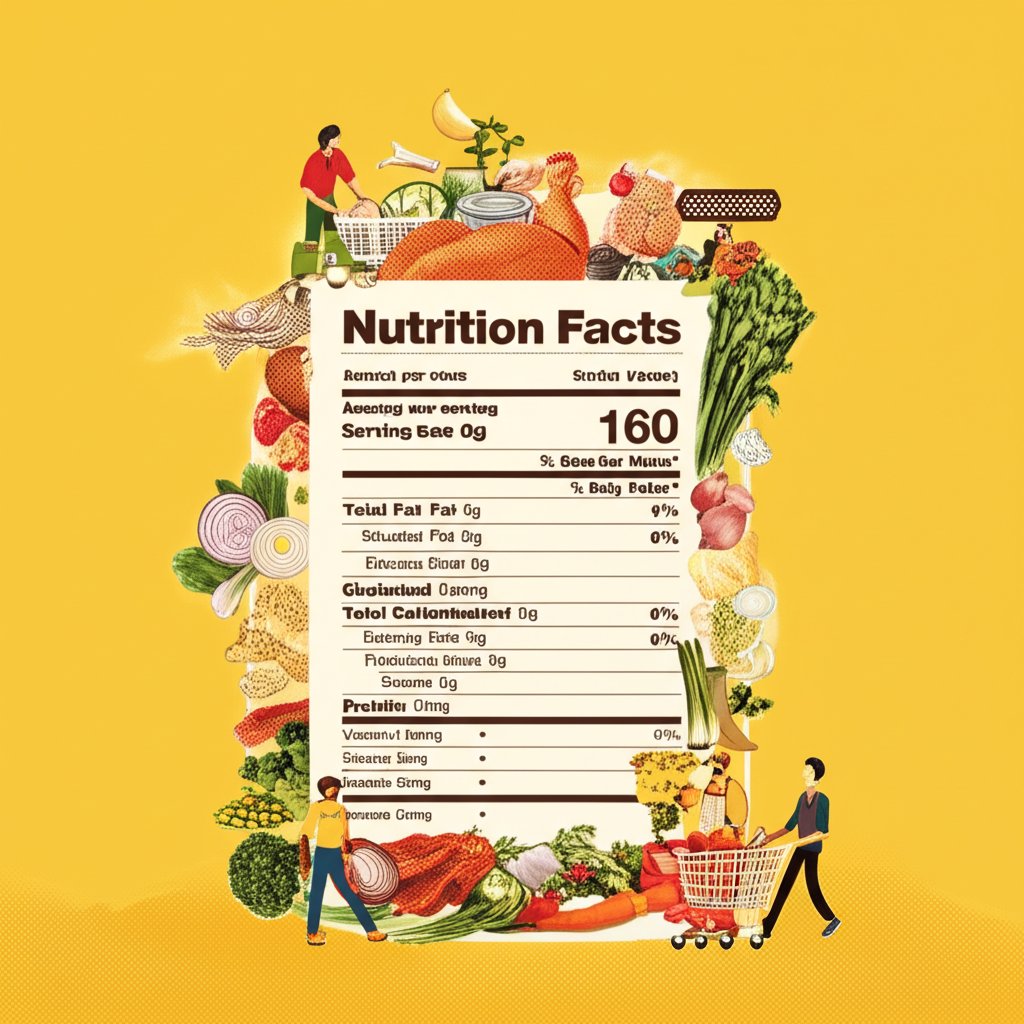Canned Chicken Nutrition Facts: What’s Inside That Can?

Ever wondered if reaching for canned chicken is really as nutritious as grilling a fresh breast? It’s easy to assume convenience means compromise, but let’s crack open the truth about canned chicken nutrition facts and see how it stacks up as a quick protein source.
At a glance:
- Discover how canned chicken stacks up nutritionally against other protein sources.
- Learn how to select the healthiest canned chicken options.
- Understand the impact of processing and additives on nutritional value.
- Identify practical ways to incorporate canned chicken into a balanced diet.
- Debunk common myths about canned chicken and its health benefits.
The Nutritional Scoop: Canned Chicken vs. Fresh
Canned chicken, surprisingly, can be a decent source of protein. But not all cans are created equal. The specifics around sodium, fat content, and added ingredients significantly impact whether it’s a truly healthy choice.
A typical 3-ounce serving (about half a can) of canned chicken (drained) generally provides:
- Calories: 140-200
- Protein: 22-26 grams
- Fat: Varies depending on whether packed in water or broth; white meat is typically leaner.
- Sodium: Can be high; look for “reduced sodium” options.
Compared to fresh chicken breast, canned chicken often has a similar protein content per serving. However, it generally contains more sodium due to the preservation process. For a broader perspective on integrating various protein sources into a healthy diet, you might find the insights on Healthy Pork Chop Info useful for comparing macronutrient profiles.
Navigating the Canned Chicken Aisle: Making Healthy Choices
Decoding labels is key. Here’s a step-by-step guide to selecting the most nutritious canned chicken:
- Choose “No Salt Added” or “Reduced Sodium”: Sodium content can be surprisingly high in canned goods. Opting for lower sodium varieties helps control your daily intake.
- Example: A regular can might have 400mg of sodium per serving, while a “reduced sodium” version could have less than half that amount.
- Look for “Packed in Water”: Chicken packed in water typically has less fat and fewer calories than chicken packed in oil or broth.
- Why? Oil adds unnecessary calories and potentially unhealthy fats.
- Check the Ingredient List: Keep it simple! The fewer ingredients, the better. Ideally, you want to see chicken, water, and maybe a touch of salt (if it’s not a “no salt added” variety).
- Red flags: Avoid cans with added sugars, artificial flavors, or preservatives.
White Meat vs. Dark Meat: The Lean Choice
Similar to fresh chicken, canned white meat is generally leaner than dark meat. This means it has fewer calories and less fat. However, dark meat contains slightly more iron and zinc.
- White Meat (Breast): Lower in fat, slightly higher in protein. Best for calorie-conscious diets.
- Dark Meat (Thigh/Leg): More flavorful, slightly higher in iron and zinc. Fine in moderation.
Is Canned Chicken Processed? Understanding the Impact
Yes, canned chicken is a processed food. The chicken is cooked, shredded, and sealed in cans and then sterilized via heat for preservation. This process can impact certain nutrients.
- Vitamin Loss: Some water-soluble vitamins, like B vitamins, can be slightly reduced during the canning process.
- Mineral Retention: Minerals like iron and zinc are generally well-preserved.
- Protein Quality: The protein content remains largely intact.
While some nutrient loss is inevitable, canned chicken remains a viable protein source, especially when chosen wisely.
Sodium: The Main Concern
The high sodium content in many canned chicken products is the biggest nutritional drawback. Excessive sodium intake can contribute to high blood pressure and other health problems.
- Mitigation Strategies:
- Drain and Rinse: Rinsing the chicken under running water can help reduce sodium content by up to 30%.
- Combine with Low-Sodium Ingredients: When using canned chicken in recipes, balance it with plenty of low-sodium vegetables, grains, and spices.
- Read Labels Carefully: Compare sodium levels across different brands and varieties.
Creative Ways to Incorporate Canned Chicken
Canned chicken is incredibly versatile. Here are a few ideas to get you started:
- Chicken Salad: Mix with Greek yogurt, celery, onion, and a touch of mustard for a healthier twist on classic chicken salad. Serve on whole-wheat bread, lettuce wraps, or crackers.
- Pro Tip: Use herbs and spices like dill, parsley, or paprika instead of excessive salt.
- Chicken Tacos/Wraps: Season with taco seasoning and combine with your favorite toppings like salsa, avocado, and shredded lettuce.
- Chicken Noodle Soup: Add to homemade or low-sodium store-bought soup for a quick and easy protein boost.
- Chicken Pasta Salad: Toss with cooked pasta, chopped vegetables, and a light vinaigrette dressing.
- Chicken Stuffed Peppers: Mix with cooked rice, vegetables, and seasonings, then stuff into bell peppers and bake.
Practical Playbook: Maximizing Canned Chicken’s Benefits
- Decision Tree:
- Goal: Healthy Protein Intake
- Is fresh chicken readily available and convenient?
- Yes: Choose fresh chicken for optimal nutrient retention.
- No: Proceed to next question.
- Is low sodium a priority?
- Yes: Select “No Salt Added” or “Reduced Sodium” canned chicken packed in water.
- No: Canned chicken packed in water is still a good option.
- Will you rinse the chicken before use?
- Yes: Reduces sodium content.
- No: Be mindful of overall sodium intake in your diet.
- Quick Start:
- Head to the grocery store and choose “No Salt Added” canned chicken packed in water.
- Drain and rinse the chicken thoroughly.
- Incorporate it into a healthy taco recipe with lots of fresh vegetables.
Quick Answers: Common Canned Chicken Questions
- Is canned chicken safe to eat every day? While canned chicken can be a part of a balanced diet, it’s best not to rely on it as your sole protein source due to its sodium content. Vary your protein sources with fresh meats, fish, legumes, and eggs.
- Does canned chicken need to be cooked? No, canned chicken is already fully cooked and ready to eat. You can add it directly to salads, sandwiches, or other dishes.
- Is canned chicken a good source of omega-3 fatty acids? No. While chicken does contain some omega-3s, it’s not a significant source. Fatty fish like salmon and tuna are much better options.
- Can I use canned chicken after the expiration date? It’s generally safe to eat canned goods a year or two after the expiration date, provided the can is not damaged (e.g., bulging, rusting). However, the quality may decline over time.
Actionable Close
While not quite the perfect protein source, understanding canned chicken nutrition facts empowers you to make informed choices. By prioritizing low-sodium options packed in water, rinsing before use, and incorporating it into varied, balanced meals, canned chicken can be a convenient and reasonably healthy addition to your diet. Just remember: moderation and smart selection are key.
- The Best Bento Box Price For Your Perfect Packed Lunch - December 15, 2025
- Bento Box Shopping Tips for Smart and Stylish Lunch Prep - December 14, 2025
- Bento Box Trays Streamline Restaurant Meal Presentation and Transport - December 13, 2025










